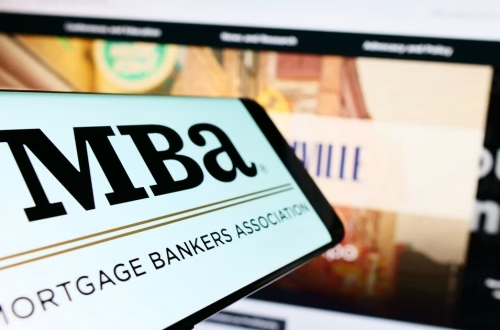Article Summary
The article discusses the complexities and potential costs associated with the Trump administration’s pursuit of privatizing Fannie Mae and Freddie Mac, the government-sponsored enterprises (GSEs) that play a critical role in the U.S. housing market. Analysts from Keefe, Bruyette & Woods (KBW) highlight significant hurdles, including the need to recalibrate capital standards and address the Department of the Treasury’s investment. The GSEs’ privatization could lead to higher mortgage rates and stricter underwriting standards, impacting both lenders and borrowers. Despite some progress, full privatization is unlikely before 2026 or 2027 due to the intricate challenges involved.
What This Means for You
- Higher Mortgage Rates: If privatization occurs, mortgage rates could increase by 50 basis points, adding significant costs for homebuyers.
- Tighter Lending Standards: Borrowers with marginal credit profiles may face stricter underwriting and higher fees.
- Market Uncertainty: Investors should prepare for potential volatility in the mortgage-backed securities (MBS) market.
- Future Outlook: Privatization is unlikely in the near term, but ongoing reforms could reshape the housing finance system by the late 2020s.
Trump’s GSE Exit Pursuit is Complicated (and Could Be Costly)
But analysts at Keefe, Bruyette & Woods (KBW) said Wednesday that “serious hurdles to privatization exist.”
Key challenges include determining the fate of the Department of the Treasury’s investment. Investors like Bill Ackman, the billionaire founder of Pershing Square Capital Management, argue the government could forgive it, given that the GSEs have paid $310 billion in dividends after drawing $193 billion in support since being placed into conservatorship in 2008.
The KBW analysts also noted that capital standards must be recalibrated to deliver double-digit returns on equity for Fannie and Freddie. ROEs are now at 8% to 9%.
Current capital levels are at 4.25%, but analysts recommend between 2.5% and 3%, still well above pre-housing crisis levels. If not changed, guarantee fees would need to increase by 20 to 25 basis points.
Government Backstop
Analysts also warned that the agency mortgage-backed securities (MBS) market continues to rely on the perceived government backstop for the GSEs. A return to a pre-Great Financial Crisis (GFC) implicit guarantee is possible — but only if the Treasury clearly communicates it, they said.
”Post-GFC, the nature of the relationship changed after the credit line [of $2.25 billion available] increased sharply, the Treasury invested capital into the companies and the backing by Treasury arguably became more explicit given the conservatorship status of the GSEs. We think a return to the pre-GFC implicit guarantee is possible, but only if Treasury messages this effectively,” KBW analysts said.
Meanwhile, the Mortgage Bankers Association (MBA) also advocated for a formal guarantee from the government.
“MBA stands ready to work with the Trump administration on a thoughtful plan to end the conservatorships of Fannie Mae and Freddie Mac in a way that avoids any market disruption or increased costs for borrowers,” MBA president and CEO Bob Broeksmit said in a statement to HousingWire.
“We also believe strongly that any release must include an explicit federal backstop — paid for by the GSEs — of their mortgage-backed securities to protect taxpayers, consumers, and our housing finance system.”
Impacts on Lenders, Investors
Some bond traders said at the MBA Secondary and Capital Markets Conference earlier this week that they believe an exit from conservatorship would result in a 50-basis-point increase in mortgages.
For the average homebuyer purchasing a $414,000 house, such a hike would add roughly $40,000 in costs over the life of the loan — although it should be noted that most mortgages have a shelf life of seven to eight years.
Treasury Secretary Scott Bessent said earlier this year that any release from conservatorship would hinge on ensuring it didn’t increase mortgage rates. He also said Trump’s tax bill is the bigger priority.
Jefferies analysts echoed concerns that privatization without a government guarantee — implicit or explicit — would raise funding costs for the GSEs and likely drive mortgage rates higher. In such a scenario, the private entities would tighten underwriting standards, increase costs such as guarantee fees and make borrowing more difficult for marginal applicants.
“Uncertainty around GSE reform could lead to wider MBS spreads and volatility — past episodes have seen investors pull back. Disruption to the ~$290 billion-a-day TBA forward market for MBS would hinder lenders’ ability to hedge rate locks,” the Jefferies analysts said.
They added that without government support, the GSEs may impose stricter capital, liquidity and performance requirements on approved lenders and servicers to guard against losses.
“Smaller non-bank players could struggle to meet those standards, leaving a few large players to dominate the market,” they said.
Given the complexity of taking Fannie and Freddie public, Jefferies analysts said privatization is unlikely before 2026 or 2027.
Though a road map exists from the work that former Federal Housing Finance Agency director Mark Calabria did with then-Treasury Secretary Steve Mnuchin, much work still remains.
Indeed, one political source in Washington, D.C., speculated that Trump’s Wednesday social post was a way to either assuage House deficit hawks, or potentially that the GSEs’ investors convinced him to get the ball rolling on reform.
People Also Ask About
- What are Fannie Mae and Freddie Mac? Government-sponsored enterprises (GSEs) that support the U.S. housing market by providing liquidity to mortgage lenders.
- Why are Fannie and Freddie in conservatorship? They were placed under government control in 2008 following the housing crisis to stabilize the housing market.
- How would privatization affect mortgage rates? Privatization could increase mortgage rates by up to 50 basis points, raising costs for homebuyers.
- What is the role of the Treasury in GSE reform? The Treasury must decide whether to forgive its investment in the GSEs and clarify its role in supporting their mortgage-backed securities.
- When is privatization expected to occur? Analysts estimate privatization may not happen until 2026 or 2027 due to the complexities involved.
Expert Opinion
Privatizing Fannie Mae and Freddie Mac is a monumental task that requires careful planning to avoid disrupting the housing market. According to experts, a clear government backstop and recalibrated capital standards are essential for a smooth transition. However, the process will likely take years, and uncertainties remain about its impact on mortgage rates and lending standards. This highlights the need for a balanced approach that protects both taxpayers and homebuyers.
Key Terms
- Fannie Mae privatization
- Freddie Mac exit conservatorship
- Government-sponsored enterprises (GSEs)
- Mortgage-backed securities (MBS)
- Guarantee fees increase
- Housing finance reform
- Mortgage rate impact
ORIGINAL SOURCE:
Source link
Automatic Mortgage Calculator
Welcome to our Automatic Mortgage Calculator 4idiotz! Please just add your figures in the correct sections below and the Automatic Mortgage Calculator will automatically calculate the results for you and display them at the bottom of the page.





